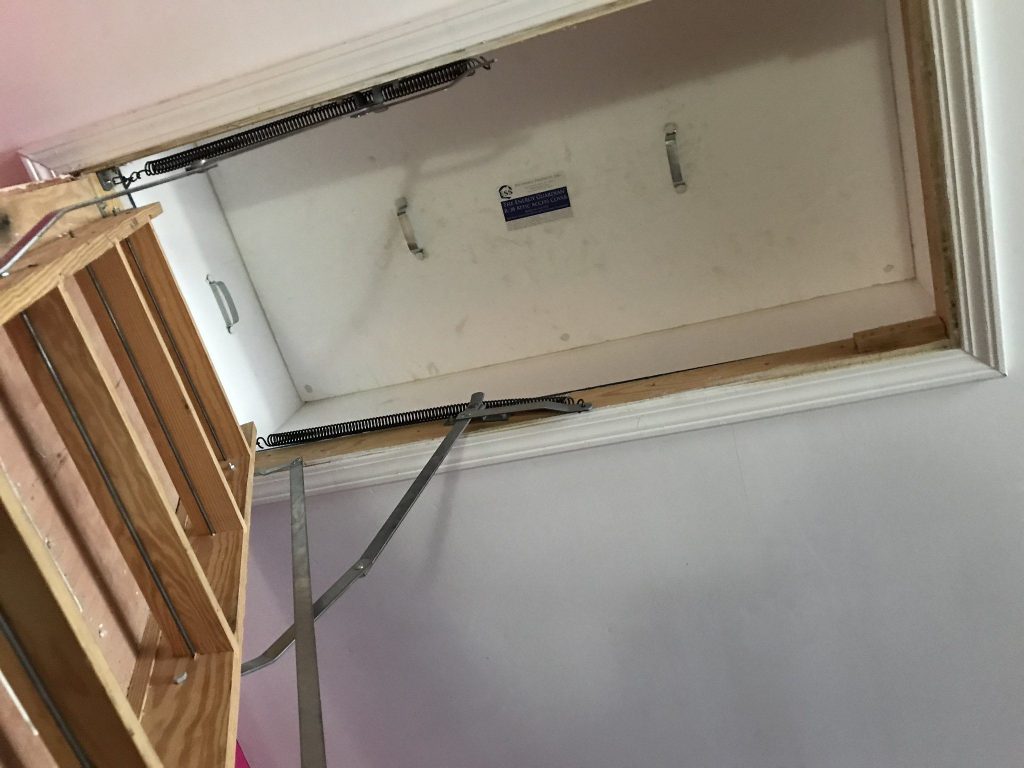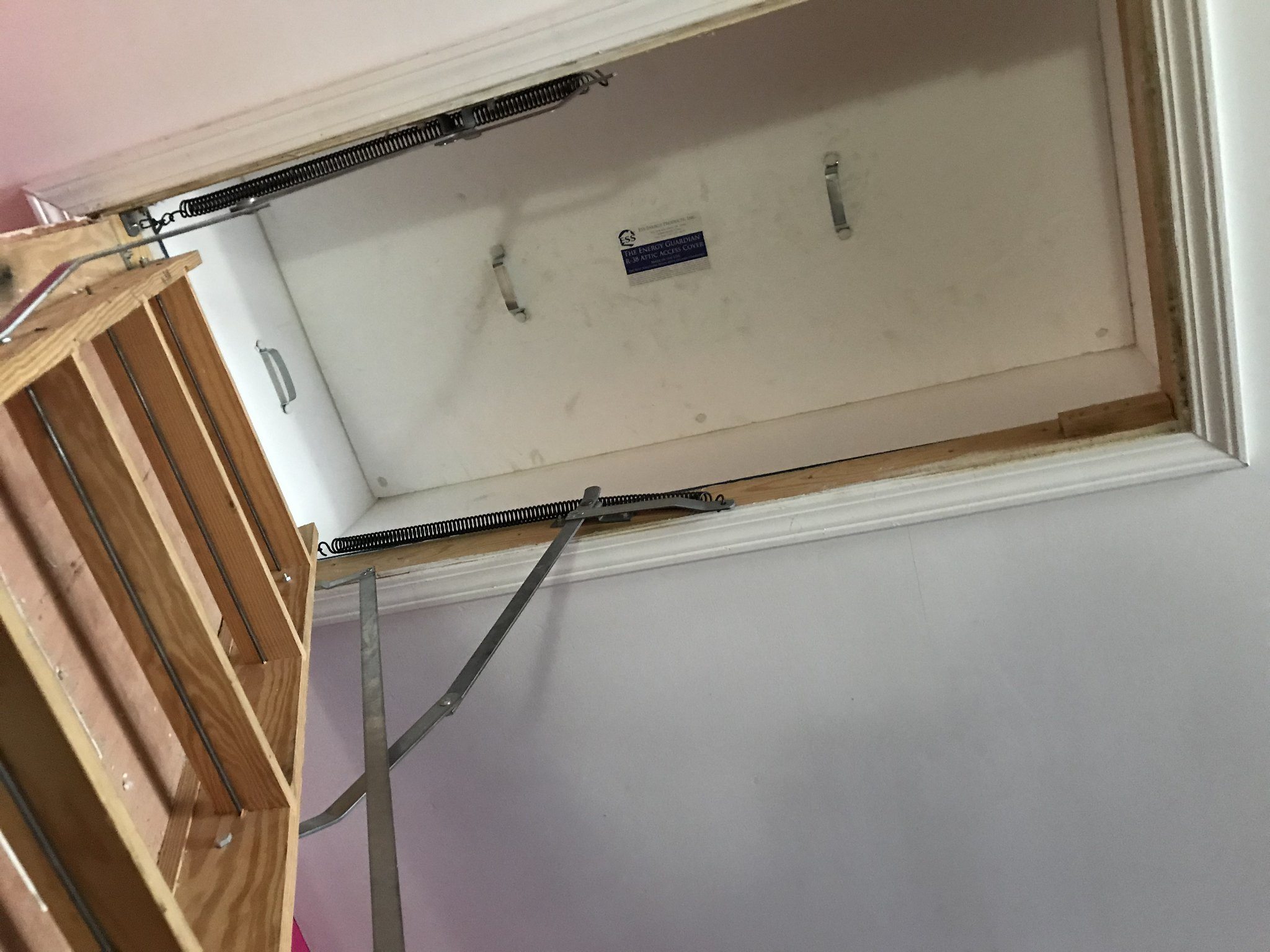Attic stairs are a great convenience, making it easy to go up into the attic at any time and utilize the space up there for storage. While there have always been people who use a ladder to get up into their home’s energy or attic, attic ladders, and attic stairs are much safer, as the ladder or attic ladder stair with insulation is anchored to the ceiling joists, preventing it from skidding out from under someone climbing it.
One problem with attic stairs is that most aren’t insulated. Suppose your central door air temperature air between the ceiling and the best attic stairs insulation, attic door cover, or attic stair insult and cover. In that case, you’ll find them to be quite different.
That means that the heat from hot or cold air out of your best attic stairs or stair insulation cover radiates into your home, increasing your home heating and cooling costs.
This is more of an issue in the attic tent in the wintertime, when cold winters are, than in the summertime, as heat rises and hard drops. So in the summer, when it’s hot in the attic, the heat radiating from the attic stair will warm the air near the ceiling, but that’s all.
However, in winter, the warm air close to the attic stair opening will cool, dropping to the floor and being replaced by fresh air, which can also be cooled.
While this is imperceptible due to the home’s HVAC system heating the already air-sealed home, it does make that system work a little bit harder to overcome the freezing air radiating down through the attic stair insulation covering the attic stairs.
Buying insulated, full attic, and even stair insulation covers for stairs is possible. Still, the best full attic and stair insulation covers provided are only ½” thick Styrofoam, which doesn’t even cover the whole thing. While better than nothing, that’s not a great option.
Something much heavier and thicker than that is needed to keep the home’s heat from floating. Insulate attic stairs insulation covers downstairs and out through the roof.
Commercially Manufactured Attic Stair Insulation
Many companies have attacked this problem, producing an assortment of “tents” and “blankets” to address it. Many of these insulation tent covers are essentially the same, a little tent made of an aluminized Mylar bubble pack.
As such, attic tent insulation covers provide thin insulation in cold winters. This is better than nothing, but still, not really enough insulation cover to meet the need.
A few companies are also producing a box type of attic door and stairway insulator and door insulation cover and an attic door and stairway insulation cover, providing considerably more insulation.
One such unit, manufactured by Battic Door, claims to provide an R-50 insulation level, probably the best commercially manufactured unit on the market. But when someone buys this sort of unit, they’re paying someone else to manufacture something they can easily make for considerably less.
Making an Attic Stair Insulation Cover
Perhaps the best solution for attic stair insulation is to make a homemade attic stair insulation cover out of polyisocyanurate foam (Polyiso), commonly called “foam board insulation cover.”
However, this is not the white Styrofoam board that is just coated with a thin layer of plastic; it’s bonded to facing on both sides, one of which is aluminum, to act as a heat reflector.
These rigid foam board attic insulation covers are a bit more expensive than the foam board covered with transparent plastic film, but not that much more costly.
That extra expense is quickly recouped in the greater efficiency and insulation value in keeping your house warm as warm air rises from attic insulation, the radiant heat your furnace produces in the home, and cold air out where it belongs.
The idea is to make a box out of the insulation, which will fit inside the rafters and cover the attic stairs insulation cover them. In contrast, tent full attic stairs insulation cover and stairway insulation covers are in their folded position. T
o make this, it is necessary to be up in the attic, with the full attic stairway insulator, attic stairs insulation cover, and attic stairway cover in the closed position so that some help will be needed.
It’s also beneficial to have a floored-over area in the attic in which to work. With most attic stairs, this requires a box that’s 22″ x 54″ and which will rise above the joists by about 8″. While ½” thick Polyiso is manufactured, it’s best to use the 1″ material for this.
Polyiso is easy to work with and can be cut with any utility knife with a blade long enough to go through the material. A means of measuring and a straight edge will also be required.
Start by measuring how high a thick best attic stair insulation ladder is when folded, measuring from the top of the best attic stair insulation frame (not the rafters) to the top of the folded ladder. Add an inch to that for good measure. Then make a box out of the Polyiso to fit those dimensions.
The package should be able to sit on top of the best attic insulation stair frame when installed. Since the idea is to hold heat in the home, put the foil side down towards the interior of the best attic stair insulation opening to reflect heat down into the house rather than the heat gain back into the foam.
To attach the Polyiso easily install, it is best to use Foil Tape rather than Duct Tape. Foil Tape makes cleaner corners than Duct Tape does, adheres better, and is not affected by radiant heat the way that Duct Tape is in radiant heat. While more expensive, it will save money in that it won’t have to be replaced.
A single layer box, made out of 1″ thick Polyiso, only provides R-6 of insulation r value though nowhere near enough. So the next layer should be from the attic floor joists, doubling the high r insulation value from the attic insulation cover.
This can be taped right to the first layer, including taping the inside corner where the second layer of attic stairway insulation sits on top of fiberglass insulation on the joists. That’s one of those areas where the Foil Tape’s ability to make sharp corners is superior to Duct Tape.
When adding attic door insulation, cover the aluminum layer and the attic door insulation cover to that second layer, and stagger the cuts in the corner so that they aren’t one on top of the other.
In other words, if the first layer of the attic door insulation or tent insulation was made so that the long sides overlap the ends, make the second layer so that the slots overlap the sides. That way, there won’t be a gap with no attic door insulation cover.
Another four to eight layers of 1″ thick Polyiso should be added to attic insulation on the top of the attic to pull the rough opening of the cover. However, adding it to the attic opening is unnecessary, and removing the insulated cover’s sides is superfluous.
With the heat rising, the top of the attic space and the attic stair cover top of the attic pulls the box where the most heat can escape. Therefore, that’s the most important part of insulating thoroughly.

Attic stairway, The EnergySmart Academy
Using the Cover
Even if two sheets of Polyiso are used to make the cover, it won’t weigh much. Polyiso weighs 2.5 lb/ft3. That works out to 6-2/3 pounds per sheet. So it won’t be challenging to move the cover, put it in place, and remove it to go up into the attic.
So it won’t be challenging to move the attic stair insulation cover around, putting it in place at the attic access door and removing it to the attic door insulation to go up folding stairs into the attic.
When pulling the ladder down to go up into the attic, the whole attic door insulation cover access cover will need to be raised and slid to one end, preferably the end that the ladder isn’t attached.
It makes the most sense to move it in a way that won’t get out of the way and won’t be in the form of climbing off the ladder into the attic space.
Sliding the whole attic access zipper quality door insulation cover over it means that only a fraction of the weight needs to be lifted, as most of the importance will be carried by whatever the attic zipper access door and the cover are sitting on. This makes it easily usable by women and children as well.
The hard part is remembering to pull downstairs and put the cover on the attic tent hatch back in place when going back downstairs.
Fortunately, if anyone forgets, it’s easy to check by pulling the ladder down slightly. If they default, all it takes is to pull the ladder down and climb up to slide the cover back in place.
If they did forget, all it takes is pulling the ladder down the attic tent and climbing partially up to slide the cover on the back attic hatch, door, and hatchback in place.
Always ensure that the attic cover seats entirely when slid back in place and that there are no air leaks or gaps in insulation stair covers, around the edges of the attic cover, between the bottom best attic stair between the body and the ladder’s frame. Even a tiny gap will allow heat to escape and cold into the home.




